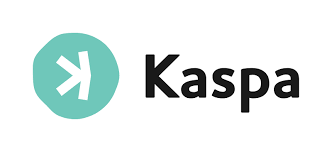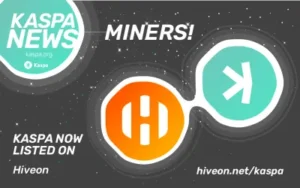Latest News
- Litecoin Bulls Charge to $110—Are Qubetics and Kaspa the Best Cryptos with 1000X Potential This Cycle?
- BlockDAG Heads to Token2049 With $217.5M Raised as Kaspa & SUI Eye Technical Breakouts
- Solana (SOL), Sui (SUI), and Kaspa (KAS) power higher with market still in disbelief
- Kasrate Launches High-Efficiency Private Mining Pool for Kaspa (KAS), Delivering Up to 30% Higher Profitability
Welcome to our Kaspa review.
Kaspa (KAS) has seen exponential growth in its KAS token price of late and there is a lot of buzz around this protocol. But can it live up to the hype?
Their unique consensus mechanism is designed to enhance decentralization while ensuring energy efficiency, appealing to a growing demographic of environmentally conscious users.
As the digital currency space continues to evolve, understanding the scalability solutions and diverse applications that Kaspa supports will be significant.
Let’s dive in…
Quick Overview
- Kaspa (KAS) utilizes a unique blockDAG structure, enabling simultaneous block creation and significantly enhancing transaction throughput and confirmation times.
- The GHOSTDAG mechanism allows for sub-second finality, making Kaspa ideal for applications requiring rapid transaction processing.
- Energy-efficient and sustainable, Kaspa reduces computational demands compared to traditional proof-of-work systems, attracting environmentally conscious users.
- Active community engagement and a dedicated development team ensure continuous improvements and adaptability to user and market needs.
- Kaspa has shown notable market performance, with increased trading volume and price appreciation, positioning it as a promising investment option.
Overview of Kaspa (KAS)
Kaspa (KAS) is an innovative cryptocurrency that distinguishes itself through its unique approach to blockchain technology. Launched to address some of the limitations of traditional cryptocurrencies, Kaspa employs a novel architecture that facilitates rapid transaction processing and scalability.
Unlike conventional blockchains that process transactions in sequential blocks, Kaspa utilizes a blockDAG (Directed Acyclic Graph) structure. This allows multiple blocks to be created simultaneously, greatly enhancing throughput and reducing confirmation times.
Kaspa’s design aims to provide a more efficient alternative to existing systems, catering to the growing demand for speed and scalability in the cryptocurrency market. The network’s ability to handle thousands of transactions per second positions it favorably among competitors, particularly in decentralized applications and smart contracts.
In addition, Kaspa’s commitment to decentralization promotes security and resilience against potential attacks, ensuring that the network remains robust over time.
Here’s a great Kaspa review video:
Unique Consensus Mechanism
Kaspa’s unique consensus mechanism is underpinned by BlockDAG technology, which fundamentally differentiates it from traditional blockchain architectures.
This approach enables enhanced speed and scalability, allowing for higher transaction throughput while maintaining network security.
Additionally, the energy efficiency of this mechanism raises important considerations in the context of sustainable cryptocurrency practices.
BlockDAG Technology Explained
At the forefront of innovative blockchain solutions, BlockDAG technology presents a paradigm shift from traditional linear blockchain architectures. Unlike conventional blockchains, which structure transactions in a sequential manner, BlockDAG allows for multiple chains to coexist, enabling a more decentralized and efficient transaction validation process. This unique structure facilitates the simultaneous addition of transactions, enhancing overall network resilience.
Key features of BlockDAG technology include:
- Non-linear structure: Transactions can be processed and confirmed in parallel, greatly reducing bottlenecks associated with linear chains.
- Increased scalability: The ability to add multiple blocks at once allows for a more adaptable network, supporting a growing number of transactions.
- Enhanced security: The decentralized nature of BlockDAG reduces vulnerabilities to attacks, as there is no single point of failure.
In the context of cryptocurrencies like Kaspa (KAS), BlockDAG offers a promising alternative that addresses many of the limitations of traditional blockchain systems.
Speed and Scalability Benefits
Frequently recognized for its innovative approach, the unique consensus mechanism employed by Kaspa greatly improves both speed and scalability within its BlockDAG framework. Unlike traditional blockchain systems that rely on linear chains, Kaspa utilizes a parallel processing structure, allowing multiple blocks to be created and confirmed simultaneously. This architecture notably reduces transaction times, enabling the network to achieve sub-second finality, making it exceptionally efficient in handling a high throughput of transactions.
The consensus mechanism, known as GHOSTDAG, allows for the inclusion of orphaned blocks into the main chain, thereby increasing the overall transaction capacity without sacrificing security. By enabling nodes to validate transactions in parallel, Kaspa can facilitate thousands of transactions per second, addressing a critical limitation faced by conventional blockchains.
Moreover, the ability to scale horizontally means that as more nodes join the network, its performance improves rather than deteriorates. This scalability is particularly beneficial for applications requiring rapid transaction confirmation, such as decentralized finance (DeFi) platforms and payment solutions.

Energy Efficiency Considerations
While many blockchain networks grapple with substantial energy consumption due to their proof-of-work mechanisms, the GHOSTDAG consensus employed by Kaspa offers a more energy-efficient alternative.
GHOSTDAG, or Greedy Heaviest Observed Subtree Directed Acyclic Graph, allows for parallel block creation, thereby reducing the computational burden typically associated with traditional mining processes. This innovative approach minimizes energy expenditure while maintaining network security and decentralization.
Key aspects of Kaspa’s energy efficiency include:
- Reduced Computational Load: By allowing multiple blocks to be validated simultaneously, GHOSTDAG lessens the need for extensive computational resources.
- Lower Energy Consumption: The streamlined process results in considerably lower energy usage compared to conventional proof-of-work systems.
- Sustainable Growth: Kaspa’s architecture supports scalability without compromising on energy efficiency, positioning it as a viable option for environmentally conscious stakeholders.
Scalability Solutions
Kaspa’s layered architecture presents significant benefits for enhancing scalability within its network.
This design allows for improved transaction throughput, accommodating a higher volume of transactions without compromising efficiency.
As the demand for faster and more reliable blockchain solutions continues to grow, these scalability measures are essential for maintaining Kaspa’s competitive edge in the market.
Layered Architecture Benefits
Scalability remains a paramount concern in blockchain technology, and layered architecture presents a compelling solution to this challenge. By distributing functionalities across multiple layers, this approach enhances the overall efficiency of the network while addressing critical issues such as congestion and latency.
Layered architecture segments the blockchain’s operations, allowing for specialized processing at various levels.
The benefits of this architecture can be summarized as follows:
- Improved Resource Allocation: Layering allows for dedicated resources to be assigned to specific tasks, optimizing performance and reducing bottlenecks.
- Enhanced Flexibility: Each layer can evolve independently, enabling developers to implement updates and innovations without disrupting the entire system.
- Increased Interoperability: Layered designs facilitate seamless communication between different blockchain networks and applications, promoting a more integrated ecosystem.

Transaction Throughput Enhancement
The implementation of layered architecture not only addresses fundamental challenges in blockchain efficiency but also paves the way for enhanced transaction throughput. By segregating data management and processing layers, Kaspa facilitates more efficient transaction validation and execution. This structural design diminishes bottleneck situations commonly experienced in traditional blockchains, where a single layer handles multiple tasks concurrently.
Kaspa’s unique approach leverages parallel processing capabilities, allowing multiple transactions to be confirmed simultaneously. This contrasts sharply with conventional systems that operate in a linear, sequential manner, often resulting in congestion during peak demand periods.
Moreover, the integration of sharding techniques within Kaspa’s architecture enables the network to distribute the load effectively across multiple nodes, enhancing scalability without compromising security.
Additionally, the use of a Directed Acyclic Graph (DAG) structure within the layered framework allows for the accommodation of an increasing number of users and transactions, thereby maintaining speed and efficiency. The result is a robust transaction throughput that positions Kaspa as a formidable competitor in the domain of scalable blockchain solutions.
Transaction Speed and Efficiency
How does transaction speed and efficiency impact the overall usability of a cryptocurrency? In the rapidly evolving landscape of digital currencies, the ability to process transactions swiftly and efficiently is crucial. For users, this directly affects the experience of utilizing the cryptocurrency, influencing adoption rates and market confidence.
Kaspa (KAS) distinguishes itself through its innovative architecture, which facilitates rapid transaction completion while maintaining low latency.
The efficiency of a cryptocurrency can be assessed through several key factors:
- Transaction Confirmation Time: Rapid confirmations encourage user engagement and trust in the system.
- Network Congestion Management: Efficient handling of high transaction volumes minimizes delays and optimizes user experience.
- Cost-effectiveness: Lower transaction fees associated with faster processing can enhance usability for everyday transactions.
Kaspa’s approach to transaction speed not only improves user experience but also positions it competitively against other cryptocurrencies.
As the demand for instantaneous value transfer continues to grow, the efficiency of Kaspa’s transaction mechanisms could prove essential in its long-term success and acceptance in the broader market.
Security Features
While transaction speed and efficiency are essential, the security features of a cryptocurrency are equally paramount, serving as a foundational element that underpins user trust and network integrity.
Kaspa (KAS) utilizes a novel consensus mechanism known as BlockDAG, which enhances security by enabling multiple blocks to be processed simultaneously. This structure mitigates the risk of centralization and single points of failure, as it allows for greater resilience against potential attacks.
Moreover, Kaspa employs a robust cryptographic framework that guarantees the integrity and authenticity of transactions. The use of cryptographic hash functions secures data, making it nearly impossible for malicious actors to alter transaction records without detection.
Additionally, the decentralized nature of its network means that no single entity possesses control over the entire system, thereby reducing vulnerability to coordinated attacks.
The protocol also incorporates incentives for honest participation, effectively discouraging malicious behavior and fostering a trustworthy environment.
Collectively, these security features position Kaspa as a formidable contender in the cryptocurrency landscape, assuring that users can transact with confidence while maintaining the integrity and security of the network.

Use Cases and Applications
Numerous use cases and applications demonstrate the versatility of Kaspa (KAS) within the cryptocurrency ecosystem. As an innovative blockchain platform, Kaspa leverages its unique architecture to facilitate various functions that extend beyond simple transactions.
Its ability to process numerous transactions in parallel empowers a range of applications, enhancing both speed and efficiency.
Key use cases for Kaspa include:
- Microtransactions: Kaspa’s rapid transaction confirmation times make it suitable for microtransactions, enabling cost-effective and instant payments for digital content and services.
- Decentralized Finance (DeFi): With its robust infrastructure, Kaspa can support various DeFi applications, from lending and borrowing to automated market-making, fostering a decentralized financial ecosystem.
- Tokenization of Assets: Kaspa allows for the tokenization of real-world assets, providing a seamless way to represent ownership and facilitate asset transfers on the blockchain.
These applications highlight the adaptability of Kaspa, positioning it as a versatile solution within the evolving landscape of blockchain technology.
As demand for efficient and scalable solutions grows, Kaspa is poised to play an integral role in the future of decentralized applications.
Community and Development Support
The success of any blockchain project hinges not only on its technological innovations but also on the strength of its community and development support.
In the case of Kaspa (KAS), the community plays a pivotal role in its ongoing development and adoption. The Kaspa community is characterized by active engagement, with forums, social media channels, and developer platforms fostering discussions and collaborations. This vibrant ecosystem encourages users to share insights, propose improvements, and contribute to the project’s growth.
Development support for Kaspa is equally robust, with a dedicated team of developers committed to enhancing the protocol’s capabilities.
Regular updates and improvements reflect an agile development process, allowing the project to adapt to emerging challenges and opportunities. Additionally, the open-source nature of Kaspa invites developers worldwide to participate, expanding the pool of talent and ideas contributing to its evolution.
Market Performance and Trends
Market dynamics play a crucial role in shaping the trajectory of cryptocurrency projects, and Kaspa (KAS) has exhibited notable performance trends in recent months. The asset has shown resilience amidst market volatility, reflecting both its unique technological foundation and increasing community interest.
As of late October 2023, KAS has recorded a significant rise in trading volume and market capitalization, contributing to its growing prominence in the crypto space.
Key performance indicators include:
- Price Appreciation: KAS has experienced a marked increase in its value, outperforming several peers in the market.
- Trading Volume Surge: Recent data indicate a consistent uptick in trading volume, suggesting heightened investor engagement and market activity.
- Market Capitalization Growth: The overall market cap of KAS has expanded, positioning it as a more competitive asset within the cryptocurrency landscape.
These trends highlight Kaspa’s potential as a viable investment option, driven by its technological advancements and supportive community.
However, while the current performance is encouraging, it is essential for investors to remain vigilant and consider external factors influencing the broader cryptocurrency market.
Future Prospects and Challenges
Anticipating the future of Kaspa (KAS) involves a careful examination of both potential opportunities and inherent challenges that could impact its trajectory.
As a project that emphasizes speed and scalability through its unique blockDAG technology, Kaspa is well-positioned to capitalize on the increasing demand for efficient cryptocurrency solutions. The growing interest in decentralized finance (DeFi) and the need for fast transaction processing may provide a fertile environment for Kaspa’s adoption among developers and users alike.
However, several challenges remain. Competition within the blockchain space is fierce, with numerous projects vying for market share, particularly in the areas of scalability and transaction speed.
Kaspa must differentiate itself from established players while continually innovating to stay relevant. Additionally, regulatory scrutiny surrounding cryptocurrencies is intensifying, which could pose hurdles for Kaspa’s expansion and user engagement.
Lastly, the project’s community-driven governance model may face difficulties in maintaining cohesion and direction as it scales.
Balancing these opportunities and challenges will be essential for Kaspa to solidify its position in the evolving cryptocurrency landscape and achieve sustainable growth in the years ahead.
Frequently Asked Questions
What Wallets Support Kaspa (Kas) for Storage?
Several wallets support Kaspa (KAS) for storage, including the official Kaspa wallet, Exodus, and other multi-currency wallets. Users should evaluate security features, user experience, and compatibility before selecting the appropriate wallet for their needs.
How Can I Buy Kaspa (Kas) Tokens?
To acquire tokens, individuals typically utilize cryptocurrency exchanges that support the desired asset. This involves creating an account, verifying identity, depositing funds, and executing a trade to purchase the tokens directly through market orders.
Are There Any Staking Options for Kaspa (Kas)?
Currently, Kaspa (KAS) does not offer traditional staking options, as its consensus mechanism is based on a unique architecture. However, users may participate in network validation and other decentralized finance activities for potential rewards.
What Is the Total Supply of Kaspa (Kas)?
The total supply of any cryptocurrency is a critical aspect of its economic model. For Kaspa, the total supply is designed to be dynamic, with a current issuance policy that incentivizes network participation and security.
How Does Kaspa (Kas) Handle Regulatory Compliance?
Regulatory compliance in blockchain projects typically involves adherence to local laws, anti-money laundering measures, and transparency protocols. Effective governance frameworks and legal counsel are essential for traversing the evolving landscape of cryptocurrency regulations.
Wrapping Up
To sum up, Kaspa (KAS) brings some very exciting new technology to the blockchain space with its innovative blockDAG technology and unique consensus mechanism.
The emphasis on scalability, transaction efficiency, and security enhances its applicability across various sectors, including decentralized finance and microtransactions.
Active community engagement and a dedicated development team further contribute to its potential for growth.
However, ongoing market dynamics and external challenges may influence its future trajectory, necessitating careful observation and analysis.


